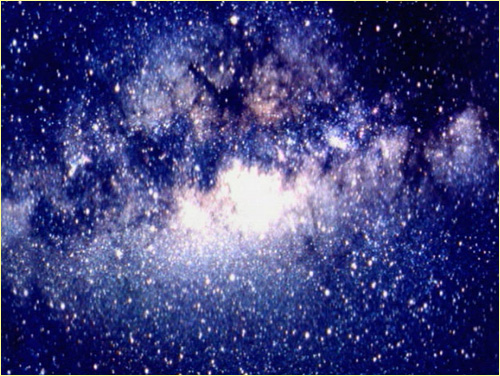
|
The Milky Way Galaxy:Reading: Chapter 23, The Milky Way Galaxy, A Spiral in Space |

|
The Milky Way Galaxy:Reading: Chapter 23, The Milky Way Galaxy, A Spiral in Space |
Galaxies are clusters of stars, gas, dust, and Dark Matter (??) which serve as the primary indicators for our study of the structure of the Universe. We will spend the next few lectures talking about the properties of normal galaxies (with particular emphasis on our own galaxy, the Milky Way galaxy) and Active Galactic Nuclei (AGNs). We will concentrate on the aspects of galaxies which we will use in our discussions of the evolution of the Universe.
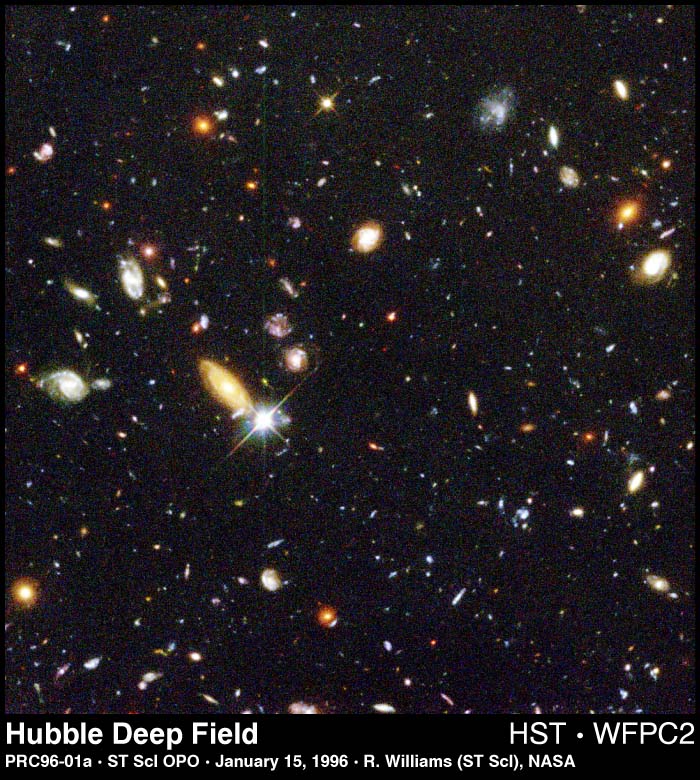
|
There are several kinds of normal galaxies among which are included those known as elliptical galaxies (for example, see M87), Irregular galaxies (for example, see N4449), and S0 galaxies. These classes of galaxies can be seen in the Hubble Deep Field image to left. An even better view is shown in the Hubble Ultra Deep Field view of the Universe. |
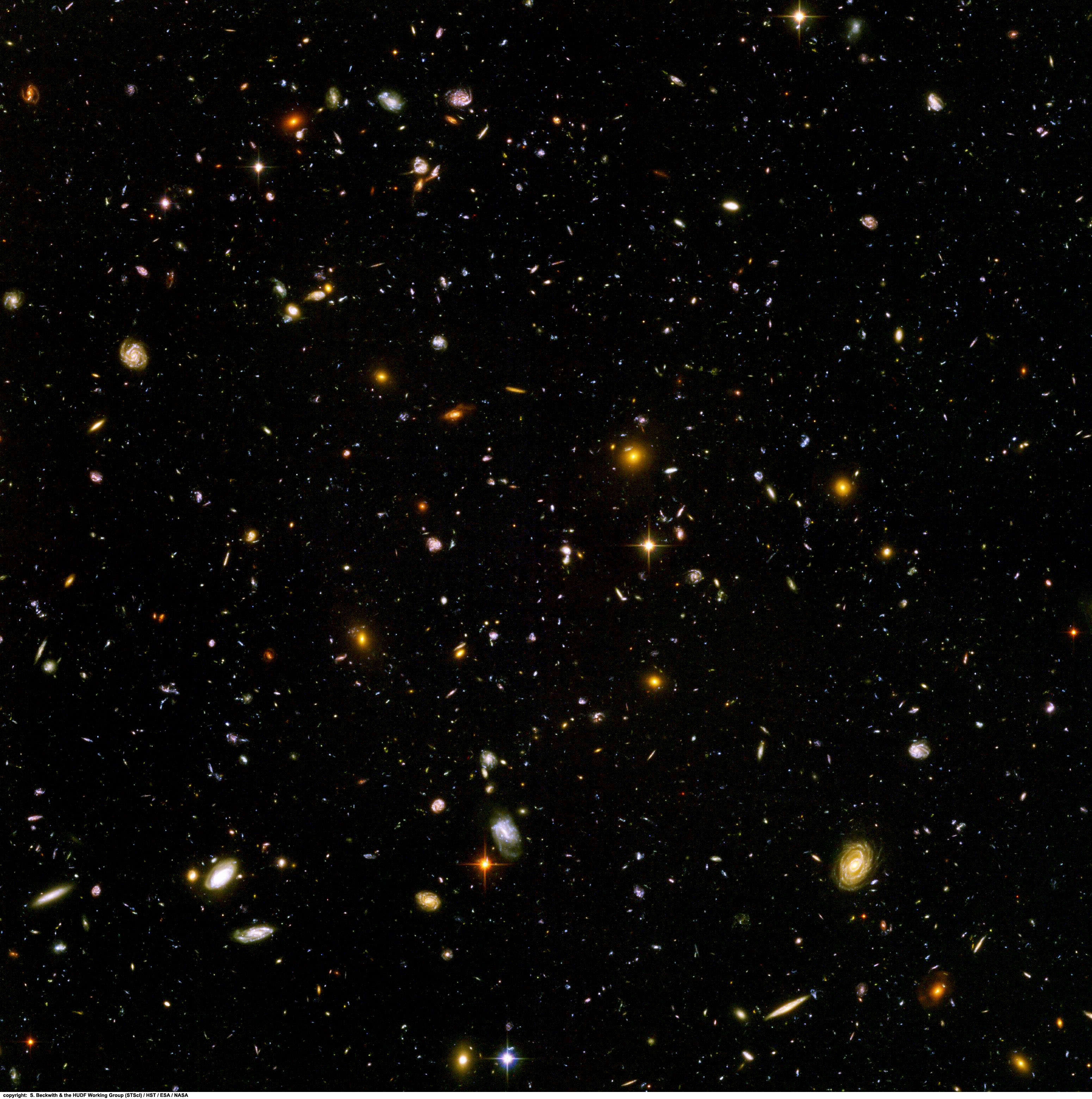
|
Overall, typical, large galaxies were classified by Hubble using the morphological scheme which bears his name,
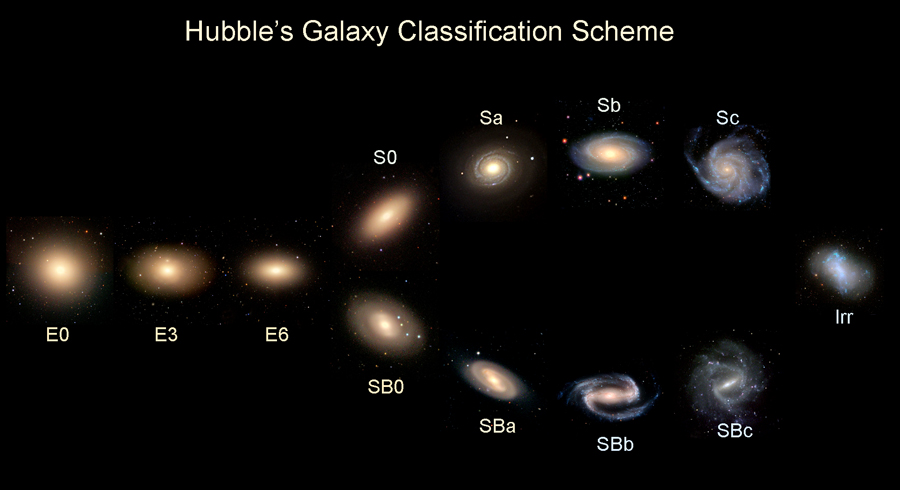
and have approximate properties,
Mass: 109 to 1012 Solar masses
Diameter: 105 to 106 light years
Number of Stars: 108 to 1012 stars
Luminosity: 108 to 1011 Luminosity of the Sun

M83 |
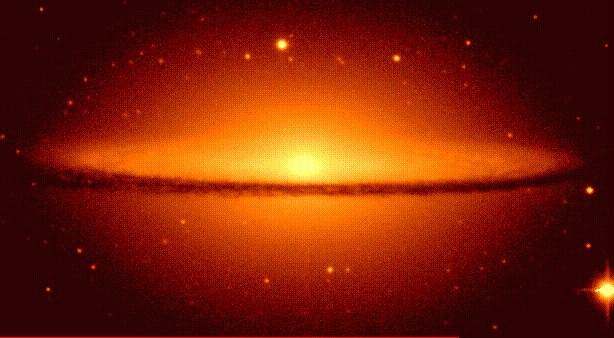
M104 |
M51 |
The Milky Way may be similar in appearance to the barred spiral galaxy, NGC 1300
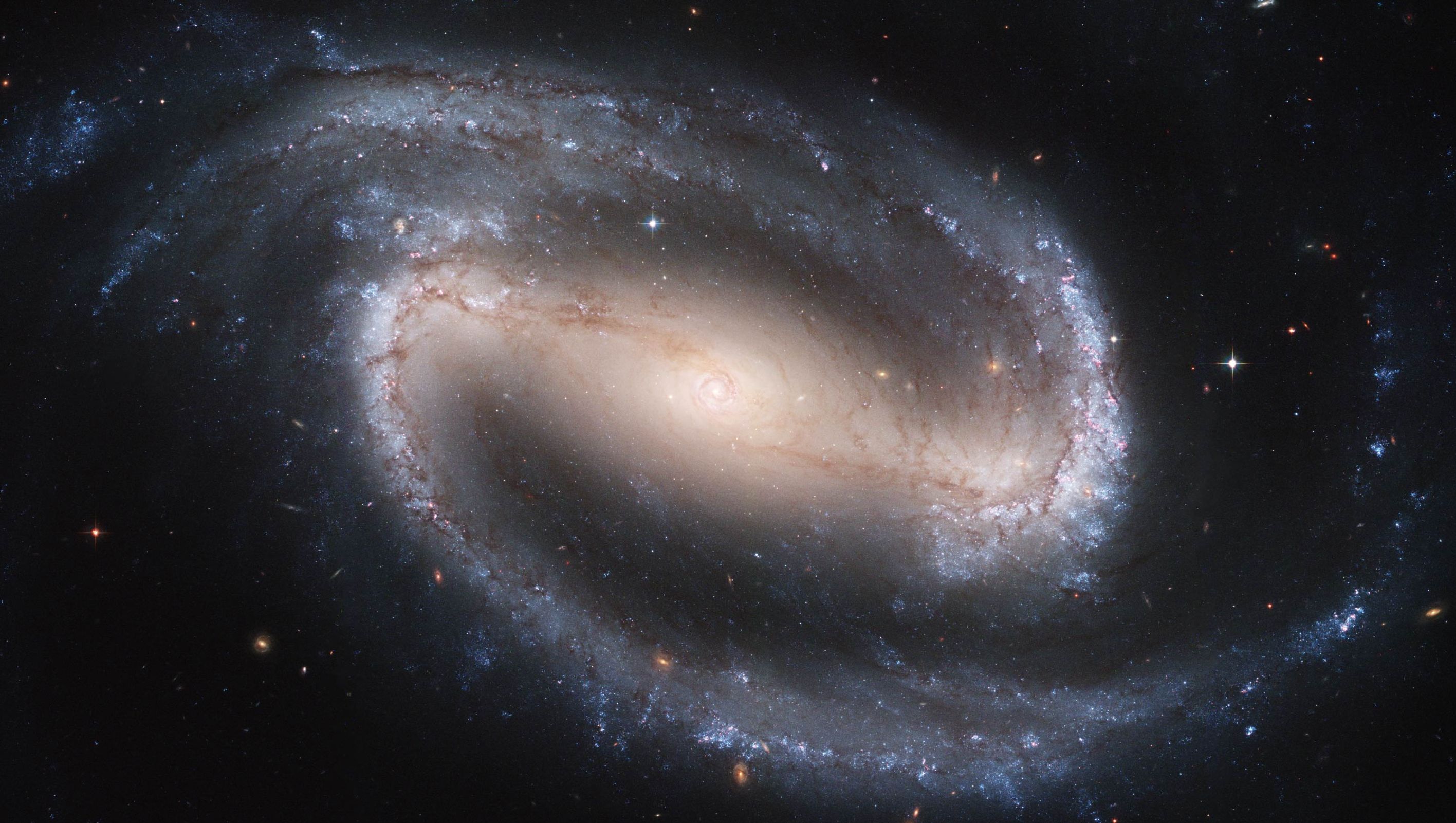 |
although this cannot be conclusively argued because it is difficult to deduce our appearance from the inside.
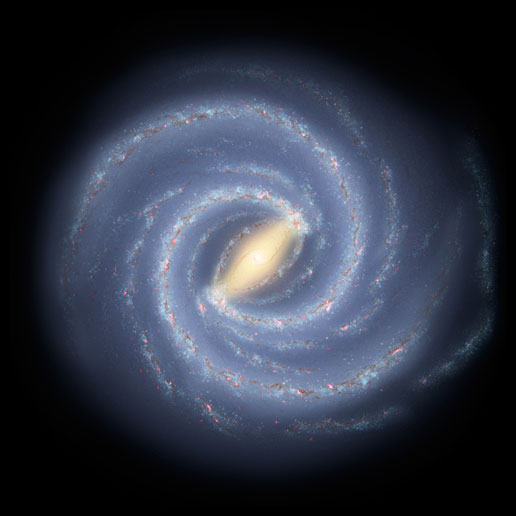 |
Mass ~ 2x1011 M(Sun) (visible disk)
~ 6x1011 M(Sun) (total?)
Disk ~ 100,000 light years (visible)
~ 300,000 light years (total?)
~ 1,000 light years (thickness at the Sun's orbit)
Luminosity ~ 2 x 1010 L(Sun)
Number of stars ~ 4 x 1011 stars
Stellar density ~ 1 star per 125 cubic light years
Gas density ~ 1 atom per cubic centimeter (a sugar cube)
|
Note--the above stellar density implies that stars are separated by roughly 5 light years (1 light year = distance light travels in 1 year ~ 6 trillion miles ~ 9.5 trillion kilometers). The Sun's nearest neighbor is Proxima Centauri at a distance of ~ 4.3 light years.
Note--There are 200-400 billion stars in our Galaxy and the mass of the Galaxy is at least 600 billion times the mass of the Sun. The average mass of a star in our Galaxy is ~0.3 times the mass of the Sun. This is consistent with the suggestion that most of the material of our Galaxy is in some nonluminous form, the so-called dark matter .
The Milky Way (as do all other spirals and the other disk galaxies known as S0s) shows a luminous disk of stars, gas, dust, a central bulge, and a larger more spherical halo. Schematically, the visible portion of the Milky Way Galaxy looks like:
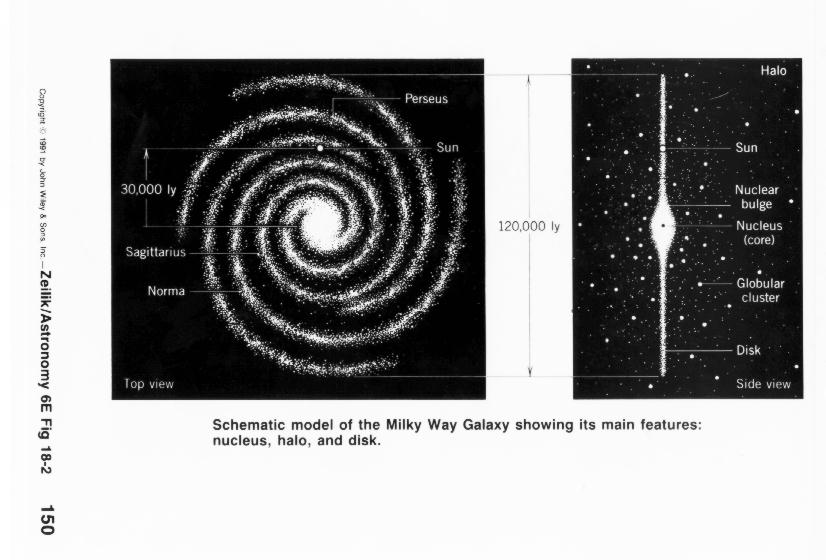
The Sun is in the disk of the Milky Way galaxy in a spiral arm, about 8 kpc (~26,000 l.y.), roughly 1/2 of the way from the Bulge of the Galaxy to the edge of the visible disk. The stars, gas,and dust, in general, orbit around the center of the disk of our Galaxy. Some stars, however, (e.g., globular clusters) orbit around the center of our Galaxy in the more spherical halo. Below, we give further details of each region and highlight important aspects of each, when warranted.